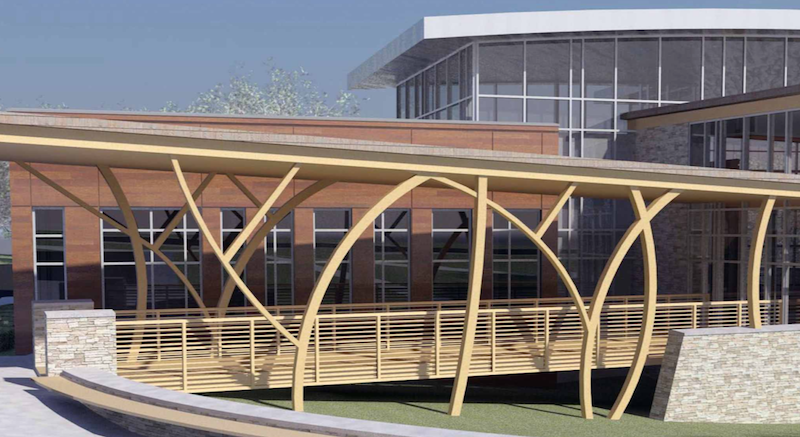Balfour Beatty, the U.K.-based construction company, continued its strategy of selling off non-core assets with its recent sale of Atlanta-based design services and project management firm Heery International to a subsidiary of the real estate and consulting giant CBRE Group.
The October 30 acquisition, for which CBRE agreed to pay an estimated $57 million (42 million British pounds) in cash, was completed today.
Heery was founded in 1952. Balfour Beatty bought a 50% stake in Heery in 1986, and increased its holding to 100% four years later. However, that ownership sometimes precluded Balfour from acting as a project manager and bidding as a GC simultaneously on certain projects in the U.S. Heery’s sale to CBRE removes any conflict of interest from Balfour’s U.S. Buildings operations, and allows it to partner with Heery on future projects.
In 2016, the latest year for which results are available, Heery International had gross assets valued at the equivalent of $106.1 million, and generated pretax profit the equivalent of $3.2 million. It currently operates from 19 U.S. offices with 535 employees. Its services include project management, architecture, engineering, interior design, and commissioning.
CBRE maintains the largest network of professional commercial real estate project managers worldwide. Its more than 5,000 specialists, including 350-plus LEED-certified professionals, oversaw projects with a total contract value of more than $42 billion worldwide in 2016.

In a joint venture with H.J. Russell, Heery provided construction management services for Phase I of the Atlanta-Fulton Public Library System's capital improvement program, which entailed eight new libraries (155,000 sf) and two expanded libraries (81,000 sf). Image: Heery International
Mike Lafitte, CBRE’s Global Group President-Lines of Business, states that this acquisition should advance his company’s strategy to expand its project management expertise. “Heery has a strong track record of client service with many longstanding relationships spanning decades,“ he says. Lafitte points specifically to Heery’s relationships in the public and educational sectors. This acquisition will also extend CBRE’s reach into such vertical segments as aviation and sports, and add capabilities and expertise in design engineering services.
Ted Sak and Glenn Jardine, Heery’s President/CEO and Executive VP/COO, respectively, will continue to lead Heery under CBRE’s umbrella.
Related Stories
MFPRO+ News | Sep 24, 2024
Major Massachusetts housing law aims to build or save 65,000 multifamily and single-family homes
Massachusetts Gov. Maura Healey recently signed far-reaching legislation to boost housing production and address the high cost of housing in the Bay State. The Affordable Homes Act aims to build or save 65,000 homes through $5.1 billion in spending and 49 policy initiatives.
AEC Tech | Sep 24, 2024
Generative AI can bolster innovation in construction industry
Jeff Danley, Associate Technology and Innovation Consultant at Burns & McDonnell, suggests several solutions generative AI could have within the construction industry.
Mixed-Use | Sep 19, 2024
A Toronto development will transform a 32-acre shopping center site into a mixed-use urban neighborhood
Toronto developers Mattamy Homes and QuadReal Property Group have launched The Clove, the first phase in the Cloverdale, a $6 billion multi-tower development. The project will transform Cloverdale Mall, a 32-acre shopping center in Toronto, into a mixed-use urban neighborhood.
3D Printing | Sep 17, 2024
Alquist 3D and Walmart complete one of the nation’s largest free-standing, 3D-printed commercial structures
Walmart has completed one of the largest free-standing, 3D-printed commercial structures in the US. Alquist 3D printed the almost 8,000-sf, 20-foot-high addition to a Walmart store in Athens, Tenn. The expansion, which will be used for online pickup and delivery, is the first time Walmart has applied 3D printing technology at this scale.
Retail Centers | Sep 17, 2024
Thinking outside the big box (store)
For over a decade now, the talk of the mall industry has been largely focused on what developers can do to fill the voids left by a steady number of big box store closures. But what do you do when big box tenants stay put?
Government Buildings | Sep 17, 2024
OSHA’s proposed heat standard published in Federal Register
The Occupational Safety and Health Administration (OSHA) has published a proposed standard addressing heat illness in outdoor and indoor settings in the Federal Register. The proposed rule would require employers to evaluate workplaces and implement controls to mitigate exposure to heat through engineering and administrative controls, training, effective communication, and other measures.
Codes and Standards | Sep 17, 2024
New California building code encourages, but does not mandate heat pumps
New California homes are more likely to have all-electric appliances starting in 2026 after the state’s energy regulators approved new state building standards. The new building code will encourage installation of heat pumps without actually banning gas heating.
Codes and Standards | Sep 17, 2024
ASHRAE’s first group of certified decarbonization professionals announced
ASHRAE recently announced its inaugural cohort of Certified Decarbonization Professionals (CDPs). Individuals who earned this designation demonstrate competency to assess, analyze, and develop effective and sustainable strategies to reduce or eliminate the life-cycle carbon footprint of buildings.
Mass Timber | Sep 17, 2024
Marina del Rey mixed-use development is L.A.’s largest mass timber project
An office-retail project in Marina del Rey is Los Angeles’ largest mass timber project to date. Encompassing about 3 acres, the 42XX campus consists of three low-rise buildings that seamlessly connect with exterior walkways and stairways. The development provides 151,000 sf of office space and 1,500 sf of retail space.
Education Facilities | Sep 16, 2024
Hot classrooms, playgrounds spur K-12 school districts to go beyond AC for cooling
With hotter weather occurring during the school year, school districts are turning to cooling strategies to complement air conditioning. Reflective playgrounds and roads, cool roofs and window films, shade structures and conversion of asphalt surfaces to a natural state are all being tried in various regions of the country.

















